Meet Members of the Class of 2013 Who Are MedCats for Life
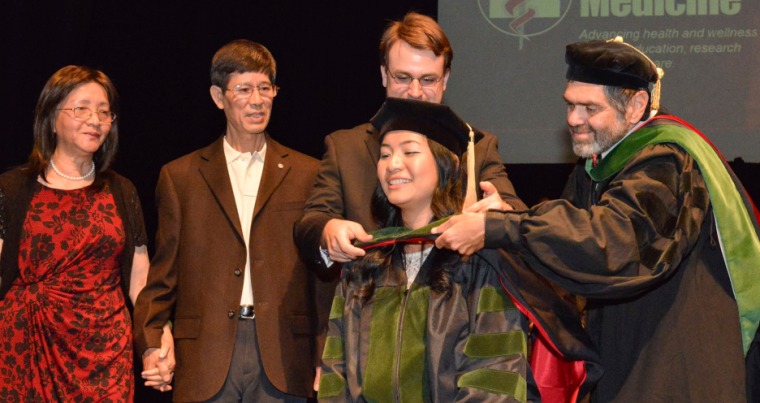
Elaine Situ-LaCasse, MD, receiving her medical degree at the Class of 2013 convocation ceremony
Although the University of Arizona College of Medicine – Tucson doesn’t necessarily track this sort of thing, there’s a general consensus that the Class of 2013 may hold the record as the cohort with the most members on faculty. Currently, more than 10% of the class hold faculty positions here.
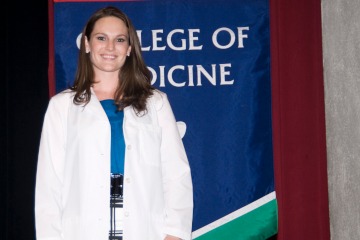
“We have noticed that a lot of our class have come back — or stayed,” said Allison Lee Thoeny, MD, residency program director for anesthesiology. “I think we all felt very committed and attached to the University of Arizona, and really enjoyed medical school. If we have such fond memories of it, it makes us want to come back and help shape the students we once were.”
As we prepare for Reunion Weekend later this month, we spoke to three members of the Class of 2013 — Dr. Thoeny, Daniel Butler, MD, assistant dean of student affairs and associate professor of medicine, and Elaine Situ-LaCasse, MD, assistant dean of student affairs and associate professor of emergency medicine — all of whom were born in Arizona, came to the University of Arizona for their undergraduate degrees, and knew they wanted to stay for medical school.
“The faculty, the staff, the students are all in it together. I saw that from afar, and wanted to be part of it,” Dr. Butler recalled. “I was just elated when I got in.”
“Throughout undergrad, I met a lot of people who left a lasting impression on me, such as when I started working in a lab for pediatric cancer research with Dr. Emmanuel Katsanis during undergrad,” Dr. Situ-LaCasse added. “It was a place I knew that I could not only grow into a physician, but also pursue any type of research and mentorship.”
Making lifelong connections
The alumni remember an overwhelming sense of community during their medical school days.
“My core study group became my best friends. We’d figure out where to eat and then where to study,” Dr. Thoeny recalled. “Studying seemed fun because you were with your friends. Sometimes we’d be there literally all night long.”
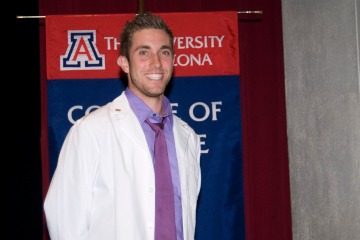
“I loved being in class with people who were all in this together,” Dr. Butler added. “You just have 100 people, and that builds a lot of camaraderie.”
They say the camaraderie didn’t stop with their classmates — faculty were also invested in building these relationships, even inviting students over to their homes for meals.
“You really got to know your professors and your attendings really well,” Dr. Thoeny said. “It wasn’t just that they were purely teachers — you felt like they really cared about you as a person.”
These days, having the opportunity to count their former mentors as colleagues is an added bonus.
“There are a lot of people who shaped my interest and passion in anesthesia who are still around, which is great,” Dr. Thoeny said. “Dr. Tony Lucas was the first anesthesiologist I ever shadowed. He was a big influence on me for sure, so it’s really fun to work with him.”
“It is very strange to be calling our professors our colleagues now,” added Dr. Situ-LaCasse. “I am so lucky to have as colleagues like Dr. Bill Rappaport, who is beloved by medical students, and Dr. Art Sanders, now retired, but who was the Societies mentor for both me and Dr. Thoeny.”
The pull back to Tucson
Drs. Thoeny and Butler both left Arizona for residency training, but say Tucson eventually pulled them back into its orbit.
“My husband and I always had an interest in returning to Arizona to settle. We love the city of Tucson — the community and the environment,” Dr. Thoeny said. “The major pull was being able to be a big part of shaping other trainees and medical providers as they’re growing, to give back.”
“Tucson has this ‘big little city’ feel to it. I always wanted to come back,” Dr. Butler added. “For an academic training environment, it’s unbeatable. Everyone is engaged in the same mission — and I love that.”
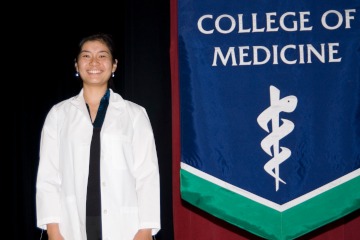
Dr. Situ-LaCasse, on the other hand, never left. She describes flying across the country to visit different residency programs.
“Being in and out of a city for less than 24 hours, blitzing through in-person interviews and tours of hospitals, you use your home program as a yardstick to compare other programs to,” she recalled. “Time and again, it was difficult to beat our faculty members here.”
Mirror images
Drs. Butler, Situ-LaCasse and Thoeny are now all involved in medical education, and see themselves in their students. Being on the other side of the lectern gives them the chance to mirror what their mentors did for them more than a decade ago — guiding their trainees on their journeys, watching them grow and getting to know them on a personal level.
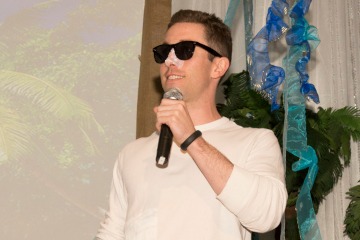
“When we were students, we had the vulnerability, the fear, the excitement. You can’t forget what that was like. When I’m lecturing in that lecture hall, I think of the exact place I sat, and where all my friends and other classmates sat,” Dr. Butler said. “There was so much belief in me here. People thought I could be better than I was, and I was able to work through my mistakes. That’s something I’ll never forget, and I wanted to be able to give those opportunities to students here.”
Dr. Situ-LaCasse draws inspiration from helping her students find their future specialty from among a myriad of options.
“It’s a big decision they have to make in a relatively short period of time,” she said. “Not only are we here to help them through challenges, we are also here to celebrate with them when they become the wonderful physicians we know they will be.”
Giving back
College of Medicine – Tucson alumni don’t need to become professors and residency program directors to help mold the next generation of doctors. There are many ways they can give back, ranging from philanthropy to volunteering their time.
Dr. Butler says there is always demand for people who can help select the next cohort of MedCats, for example by conducting multiple mini-interviews with applicants.
“One great way to give back is through connecting with the university in a small way, like offering to do interviews for future students or residents,” he said.
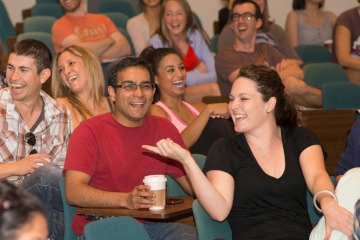
Alumni can show up to events that bring them into contact with current students, providing an opportunity to share experiences.
“It would be really nice to have more of our alumni chat with our students, set examples, share stories of success and challenges,” said Dr. Situ-LaCasse. “They might say, ‘I have had these struggles during medical school, but look where I am now. You can do it too.’”
Dr. Thoeny remembers doing rotations in private practices, which helped shape her path.
“If you’re a private practice doctor, sign up for being a proctor or something like that,” she said. “People are actually much better at teaching or mentoring than they expect to be — you just have to take a leap.”
Whether alumni make financial contributions to support scholarships and other initiatives; take an active role in nurturing the next generation of physicians, such as by proctoring or interviewing applicants; or remain a presence on campus by attending Grand Rounds, Founders Day, Reunion Weekend or other events, it’s their common mission and shared experiences that bring together MedCats at all stages.
Members of the College of Medicine – Tucson Class of 2013 who are also current faculty members include:
- Josie G. Acuña, MD, assistant dean of curricular affairs-clinical competency and associate professor of emergency medicine
- Daniel C. Butler, MD, assistant dean of student affairs and associate professor of medicine
- Charlene Clements, MD, clinical assistant professor of family and community medicine
- Anna-Marie Cosentino, MD, clinical assistant professor of pediatrics
- Maili Drachman, MD, clinical assistant professor of emergency medicine
- James Fox, MD, clinical assistant professor of emergency medicine
- Galen Garcia, MD, clinical assistant professor of anesthesiology
- Alex Perry, MD, MPH, clinical assistant professor of medicine
- Jennifer Plitt, MD, clinical assistant professor of medicine
- Keith Primeau, MD, MPH, clinical assistant professor of emergency medicine
- Amber Rice, MD, associate professor of emergency medicine
- Elaine Situ-LaCasse, MD, assistant dean of student affairs and associate professor of emergency medicine
- Brian Clark Smith, MD, clinical associate professor of psychiatry
- Allison Lee Thoeny, MD, residency program director for anesthesiology

